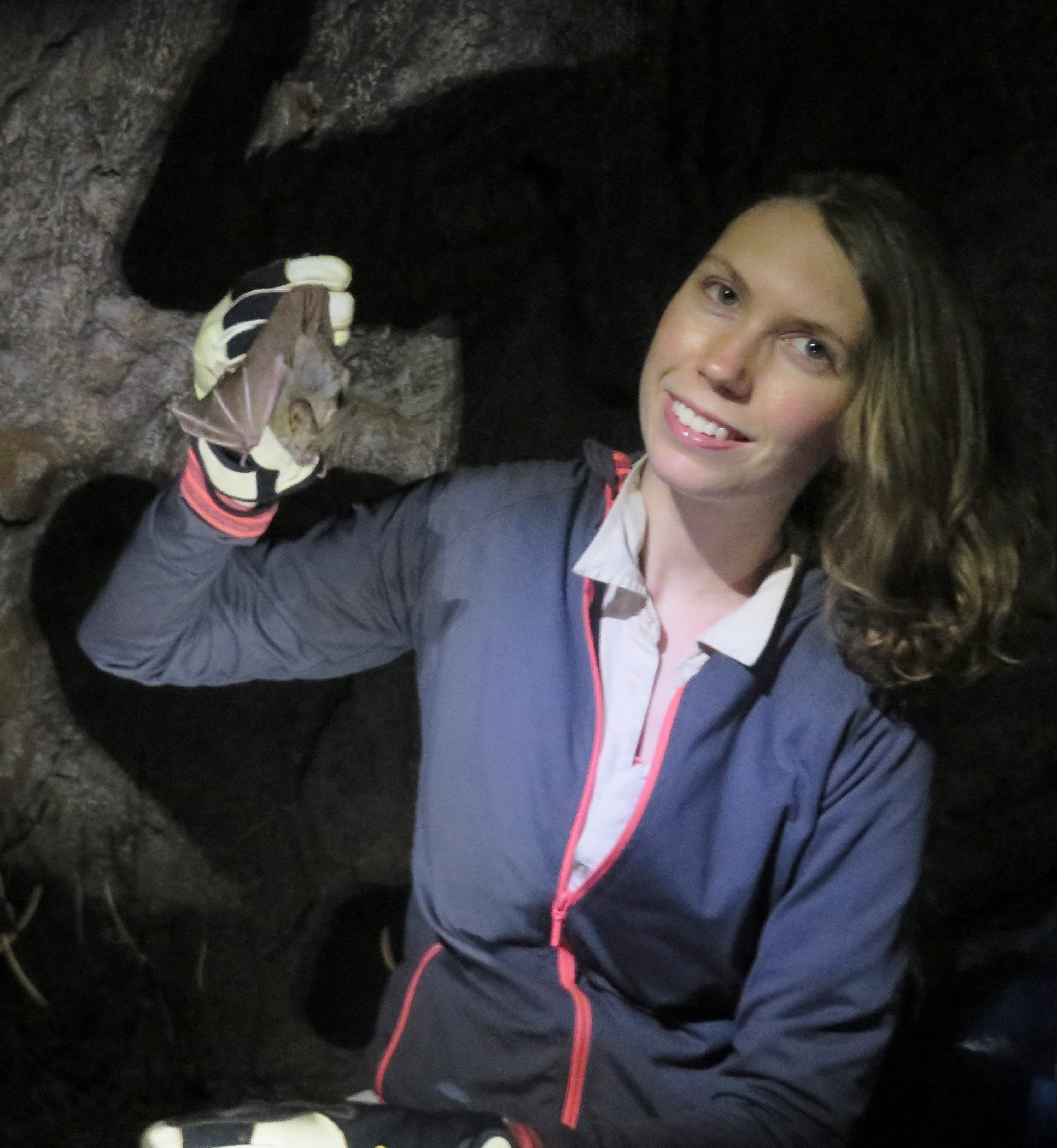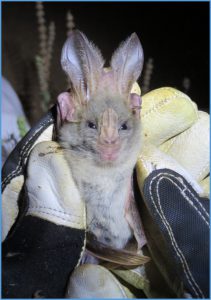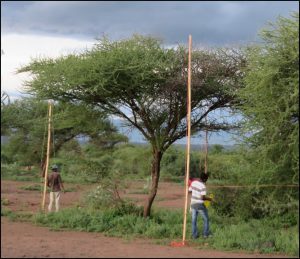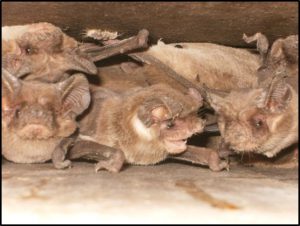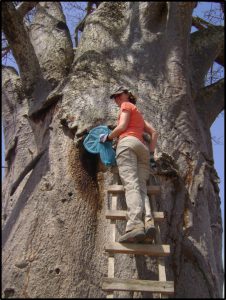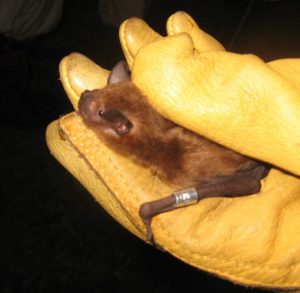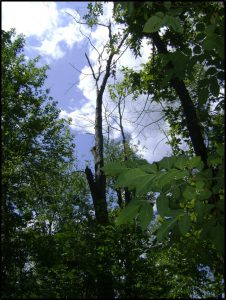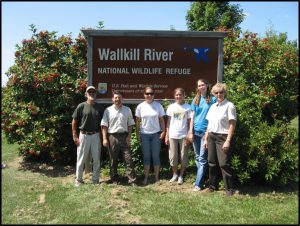I have been investigating the who, what, and why of singing in the heart-nosed bat, Cardioderma cor in the savanna ecosystem of Tanzania.
C. cor is a member of the small family of Megadermatidae, whose members sport a variety of vocal behaviors (including songs) and social behaviors (including territoriality), but detailed studies of these behaviors have been largely lacking. C. cor was noted to sing low frequency songs on what appeared to be exclusive foraging areas. Whether these areas could be properly termed “territories,” the role that singing plays in territoriality, and even what the songs looked like had yet to be assessed. This species could offer an exciting opportunity to look at the relationship between songs and foraging territories- a relationship strongly observed in birds but little recognized in bats.
C. cor sings mostly during the long dry season (May-October). Over the course of 3 field seasons for 17 months total, I trained and worked with a team of young Tanzanians to identify and track singers, study their behaviors and record their vocal repertoire, and conduct playback experiments . We’ve established that singing is a territorial behavior in males. Songs are variable, presenting opportunities to assess the relationship between song metrics and signaler quality and behavior. Every season has presented interesting new behaviors. Some of our work is published (see below), but check back for some of the “meaty” stuff we’re currently working on!
